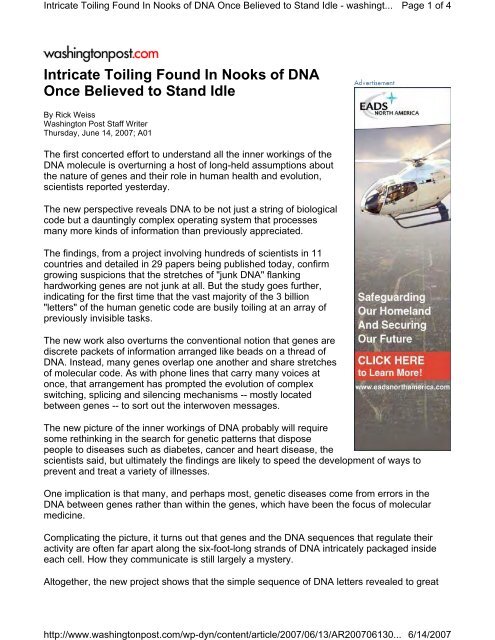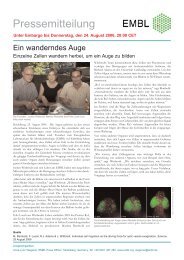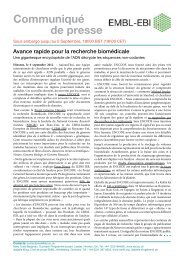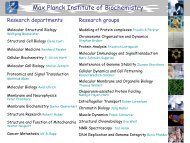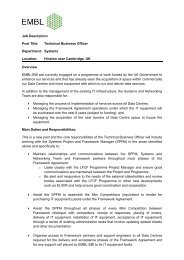Media Clips - EMBL
Media Clips - EMBL
Media Clips - EMBL
You also want an ePaper? Increase the reach of your titles
YUMPU automatically turns print PDFs into web optimized ePapers that Google loves.
Intricate Toiling Found In Nooks of DNA Once Believed to Stand Idle - washingt...<br />
Intricate Toiling Found In Nooks of DNA<br />
Once Believed to Stand Idle<br />
By Rick Weiss<br />
Washington Post Staff Writer<br />
Thursday, June 14, 2007; A01<br />
The first concerted effort to understand all the inner workings of the<br />
DNA molecule is overturning a host of long-held assumptions about<br />
the nature of genes and their role in human health and evolution,<br />
scientists reported yesterday.<br />
The new perspective reveals DNA to be not just a string of biological<br />
code but a dauntingly complex operating system that processes<br />
many more kinds of information than previously appreciated.<br />
The findings, from a project involving hundreds of scientists in 11<br />
countries and detailed in 29 papers being published today, confirm<br />
growing suspicions that the stretches of "junk DNA" flanking<br />
hardworking genes are not junk at all. But the study goes further,<br />
indicating for the first time that the vast majority of the 3 billion<br />
"letters" of the human genetic code are busily toiling at an array of<br />
previously invisible tasks.<br />
The new work also overturns the conventional notion that genes are<br />
discrete packets of information arranged like beads on a thread of<br />
DNA. Instead, many genes overlap one another and share stretches<br />
of molecular code. As with phone lines that carry many voices at<br />
once, that arrangement has prompted the evolution of complex<br />
switching, splicing and silencing mechanisms -- mostly located<br />
between genes -- to sort out the interwoven messages.<br />
The new picture of the inner workings of DNA probably will require<br />
some rethinking in the search for genetic patterns that dispose<br />
people to diseases such as diabetes, cancer and heart disease, the<br />
scientists said, but ultimately the findings are likely to speed the development of ways to<br />
prevent and treat a variety of illnesses.<br />
Page 1 of 4<br />
One implication is that many, and perhaps most, genetic diseases come from errors in the<br />
DNA between genes rather than within the genes, which have been the focus of molecular<br />
medicine.<br />
Complicating the picture, it turns out that genes and the DNA sequences that regulate their<br />
activity are often far apart along the six-foot-long strands of DNA intricately packaged inside<br />
each cell. How they communicate is still largely a mystery.<br />
Altogether, the new project shows that the simple sequence of DNA letters revealed to great<br />
http://www.washingtonpost.com/wp-dyn/content/article/2007/06/13/AR200706130...<br />
6/14/2007


